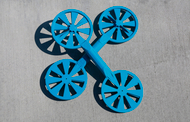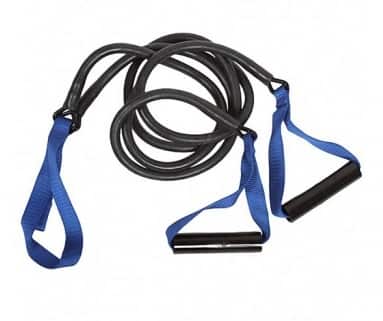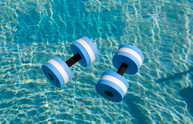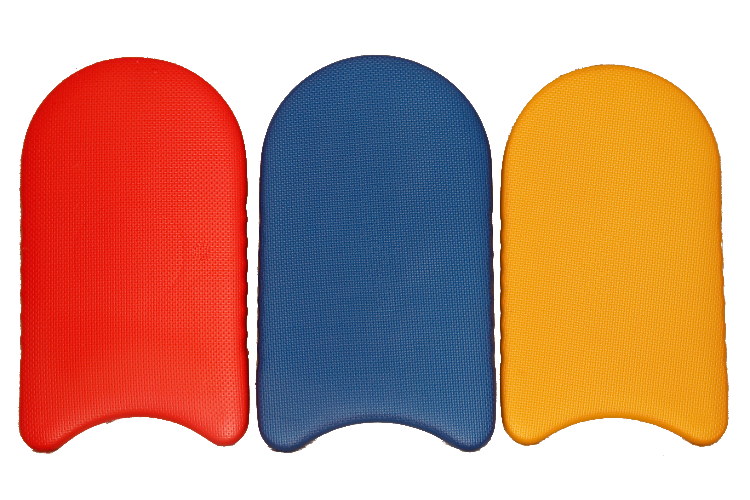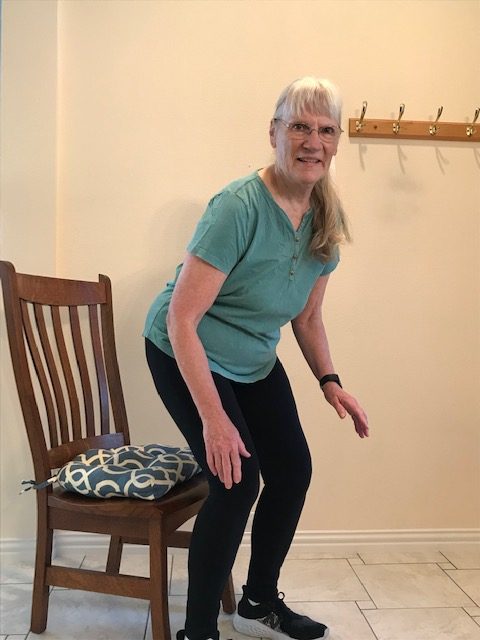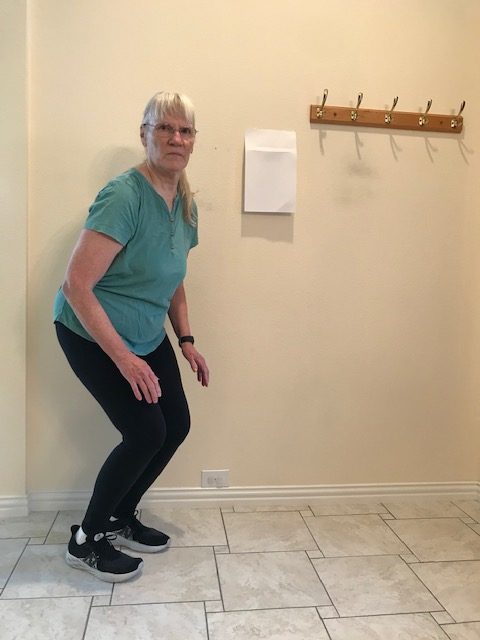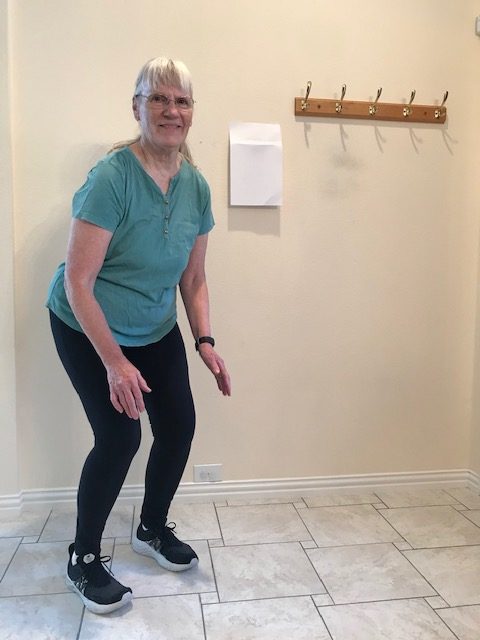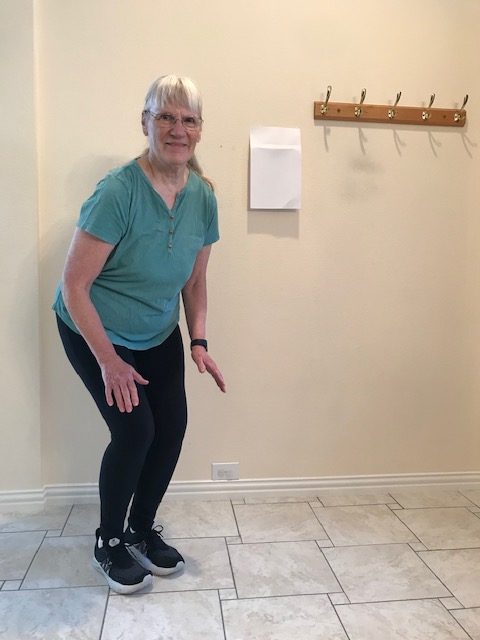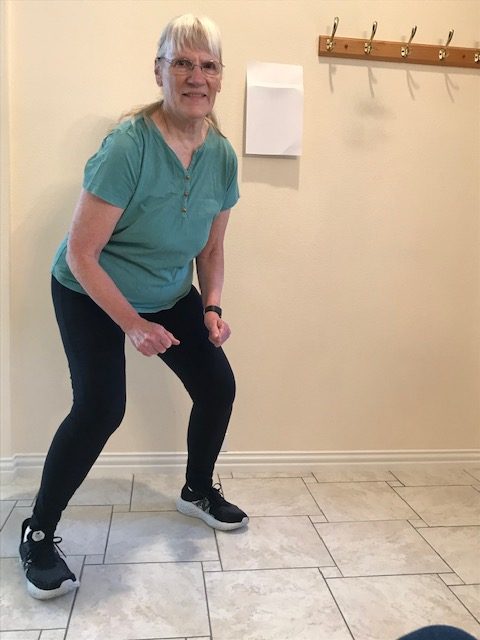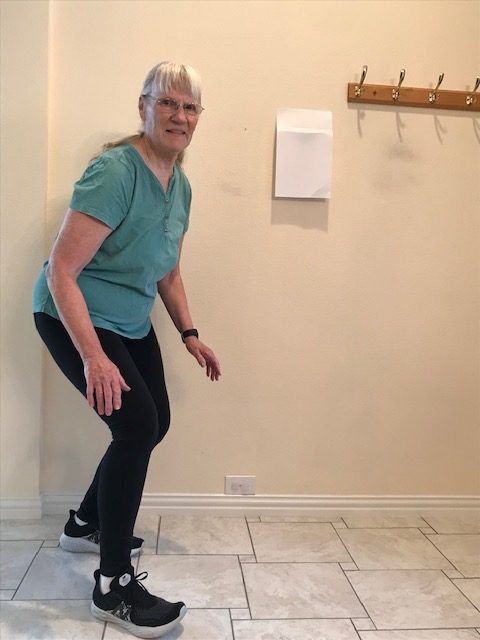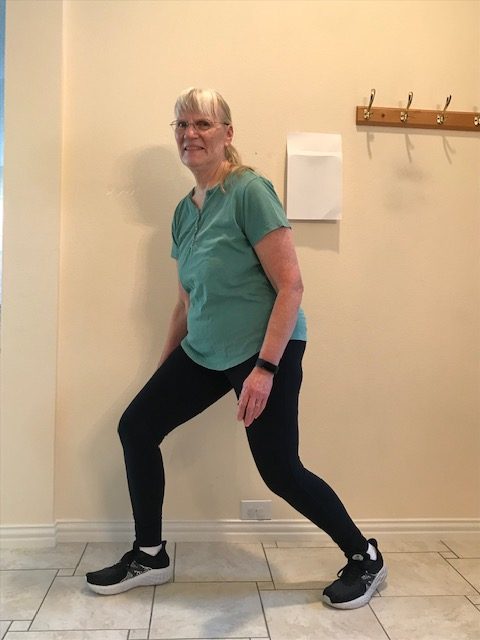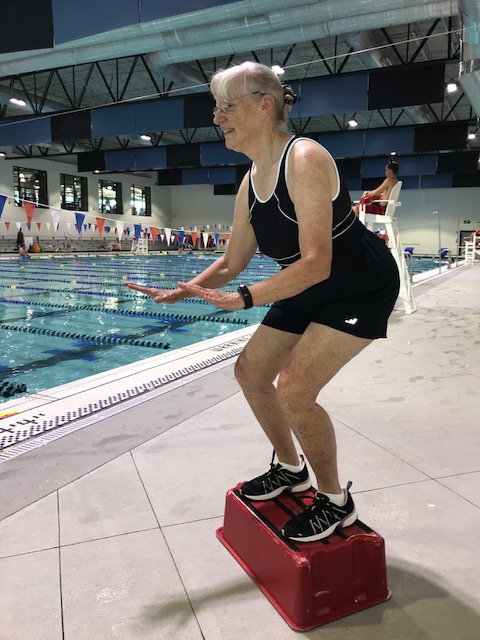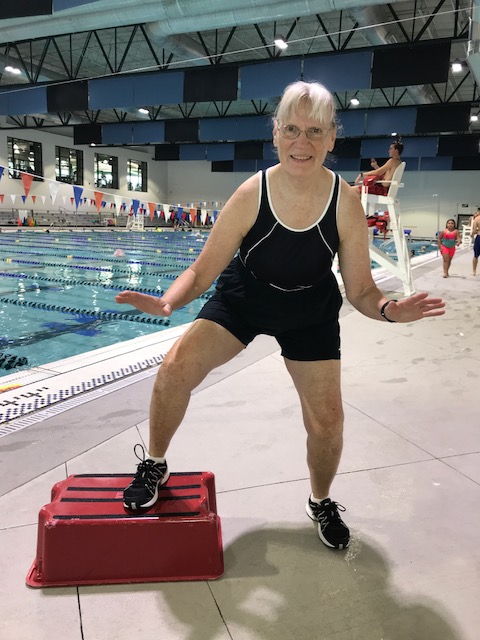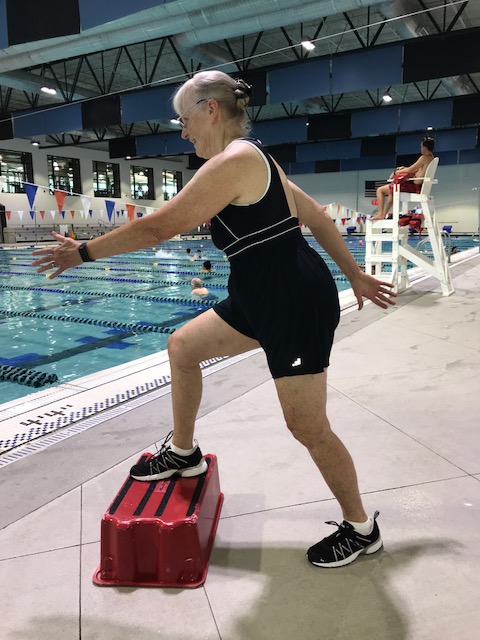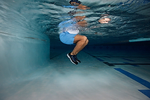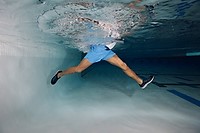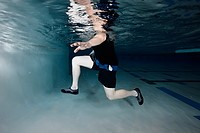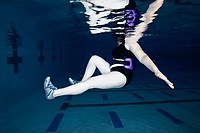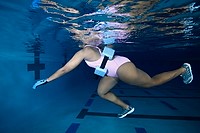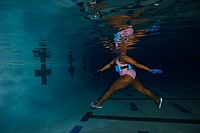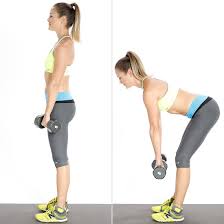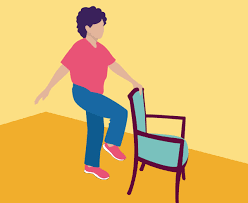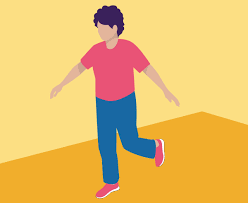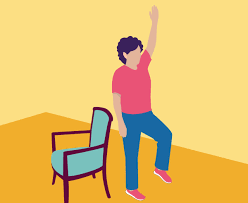
People of all ages and all abilities can enjoy water fitness. From the toddler running through the splash pad, to the high schooler on the swim team, to the athlete training for a triathlon, to the active older adult in a water aerobics class – all experience the pleasure of moving their bodies through the water. Being in water reduces the stress response and creates a feeling of relaxation. Immersion offloads the joints, making movement more comfortable than movement on land. Playing in the pool is just plain fun! But there is more to aquatic fitness than the fun factor. Research on water fitness has been going on the last few decades and the studies have found multiple benefits for almost every body.
Arthritis. The Arthritis Foundation has been promoting water exercise for people with arthritis for many years. Buoyancy lifts the weight of the body upward, reducing impact shock and creating a feeling of weightlessness. When joints are submerged in water, they have a greater range of motion. The hydrostatic pressure of water compresses the body which helps reduce swelling and fluid buildup, relieving inflammation of the joints. All this allows people with arthritis to exercise more comfortably than they could on land. The Aquatic Exercise Association/Aquatic Therapy and Rehab Institute (AEA/ATRI) offers Arthritis Foundation Aquatic Exercise Program (AFAP) Leader Training for anyone interested in getting certified as an Arthritis Foundation instructor.
Multiple Sclerosis. MS is a neurological disease that can lead to gait and balance difficulties, weakness, and fatigue. There may be a decreased ability to perform the activities of daily living and problems with mental health because of its unpredictability. Heat can worsen symptoms, and therefore exercising in a pool can be an ideal way to increase the physical ability to function. Participation in a water fitness class can improve gait and balance, and being in a group setting with other people who share their challenges can be helpful for mental health. For more information see “MS and the Aquatic Environment” by Erica Harper in the September/October/November issue of Akwa magazine, which can be accessed in the Members Only section of the AEA/ATRI website.
High Blood Pressure. The risk of hypertension increases as we age, but regular exercise can help control high blood pressure. That is because aerobic exercise makes the heart stronger. Exercising in the pool provides additional benefits. The hydrostatic pressure of water pushes blood out to the extremities, increasing stroke volume and cardiac output, while at the same time lowering the heart rate. That means your heart is working just as hard as on land, but each heart beat is more efficient. Not only that, but just getting into the pool lowers blood pressure for most people, and this effect lingers for a while after you get out of the pool.
Stroke. Stroke patients are more likely to be at risk for falling which limits their ability to perform the activities of daily living. in a 2021 study by Perez-de-la Cruz, stroke patients were divided into three groups. One group performed therapy on land. One group performed therapy on land and aquatic therapy with Ai Chi. The third group performed aquatic therapy with Ai Chi. After 12 weeks, the group that performed combined therapy and the group that performed aquatic therapy with Ai Chi improved significantly more than the group that performed therapy on land. The improvements were in static and dynamic balance and in ability to perform the activities of daily living.
Fall Prevention. Fall prevention is critical to seniors’ wellbeing. Most people think that this means balancing on one foot and learning how to get up off the floor. While these activities are important, learning to prevent a fall needs to include multisensory training, foot and ankle exercises, and weight shifting. Standing on one foot in the pool is safer than standing on one foot on land. If you lose your balance in the pool, the viscosity of water slows the fall down making it easier to regain you balance and try again. A great way to perform multisensory training in the pool is to use the unpredictable command technique. This involves cuing moves such as marching in place, turning your head to the right, walking backwards on tiptoes, circling the right arm, closing the eyes, and stepping forward with the toes pointed in. This requires using all your senses to follow the unpredictable cues. Standing on a noodle in the pool is an excellent way to work on ankle mobility. See Ruth Sova’s website for a free video demonstration. The graceful movements of Ai Chi involve weight shifting that helps improve balance.
Back Pain. Fifty to eighty percent of adults will suffer from back pain during their lifetime. In a study published in JAMA (a peer-reviewed medical journal), 113 people with chronic back pain were divided into two groups. One group had physical therapy twice a week, and the other group did pool exercises twice a week. The group that did pool exercises showed greater improvement than the group that had physical therapy, and a year later the pool exercisers still felt better than the land exercisers.
Depression. About 5% of adults suffer from depression, and that number is probably low because not everyone who suffers from depression gets diagnosed. A study in 1999 (Blumenthal et al.) found that group exercise three times a week at moderate to high intensity was just as effective at treating depression as was medication. Even 6 months later, participants who recovered were less likely to relapse into depression if they had been in the exercise group. A meta analysis published in PubMed in February 2023 concluded that aquatic exercise can be a promising conservative therapy for mental health management.
Preventing Alzheimer’s Disease. Alzheimer’s disease is the most common form of dementia. Emerging research has revealed that exercise profoundly affects brain health and cognitive function. There is a clear link between increased physical fitness and a reduced risk of developing dementia, including Alzheimer’s disease. Exercise promotes the growth of new neurons and promotes the release of elements such as brain-derived neurotrophic factor (BDNF) which strengthens the connections between brain cells. To capitalize on this benefit of exercise, 150 minutes of moderate intensity aerobics or 70 minutes of vigorous aerobics is recommended. This can be accomplished during water exercise by increasing the body’s surface area by opening the palms, lengthening the arms and legs, and using equipment. The unpredictable command technique can further challenge the brain during exercise. For more information see the August-September-October 2023 issue of Research to Practice Newsbytes in the Members Only section of the AEA/ATRI website.
If you are interested in working with special populations, consider getting certified by the Aquatic Therapy and Rehab Institute. Their website can give you more information. See you in the pool!






